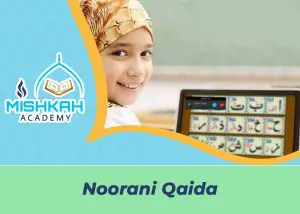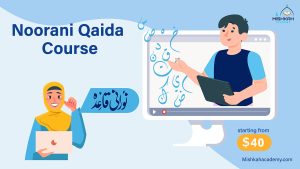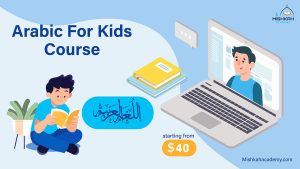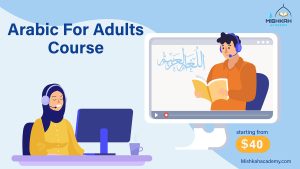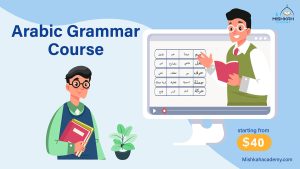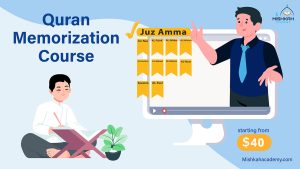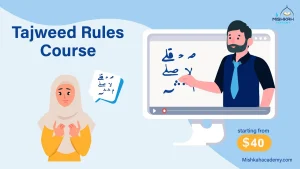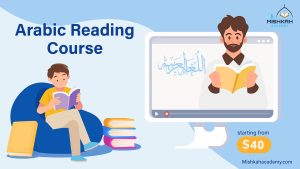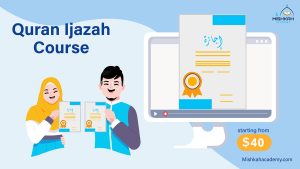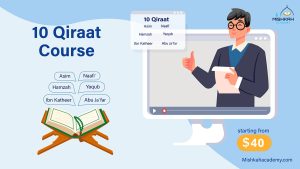Learn How To Read Arabic
Table of Contents
ToggleArabic is one of today’s most significant languages in the world. Indeed, in a region that spreads across different countries and continents around the globe, almost 300 million Arabic speakers practice it every day.
Arabic is among the world’s 10 most widely spoken languages. You want to learn Arabic in the fastest possible way, of course, right?
In this daring objective, Mishkah Academy wants to help you to succeed. You should know that the Arabic language, both in its form and structure, is very distinct from English before you start.
How To Read Arabic Online
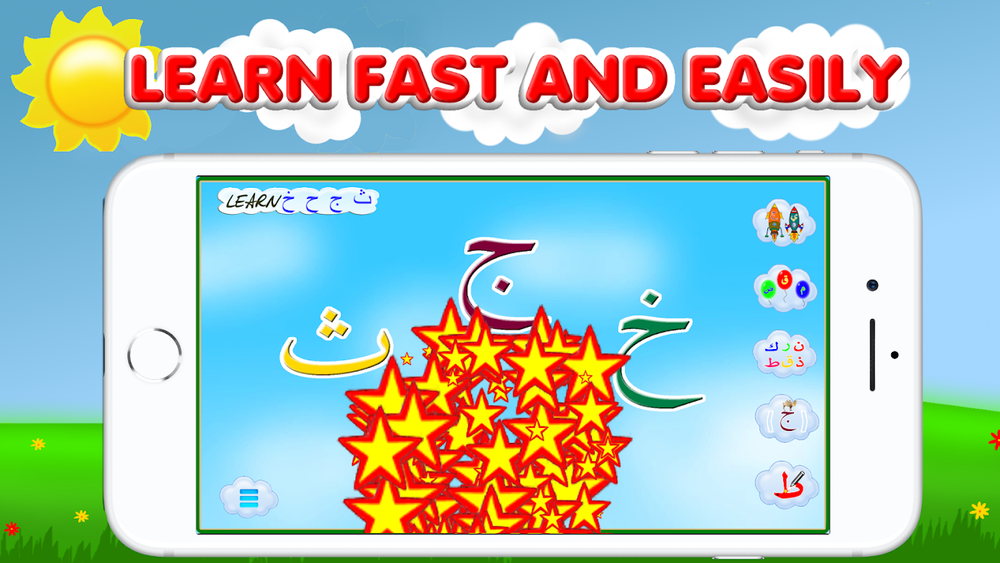
Learning to read Arabic can be a challenging task, but the reward of being able to read and understand Arabic text is well worth the effort. Arabic is the fifth most widely spoken language in the world and is the official language of 22 countries. It is also the liturgical language of Islam, which makes it a significant language for Muslims. Here are some steps that can help you learn to read Arabic.
First, start by familiarizing yourself with the Arabic alphabet. Arabic is written from right to left and has 28 letters. Each letter of the Arabic alphabet has a different shape, and these shapes change depending on where they appear in a word. Learning the shape of each letter and how they change within a word is critical to reading Arabic.
Second, practice reading simple Arabic words. Start with short words that are easy to read and progress to more complex or longer words. You can find Arabic vocabulary and short texts online or in textbooks. Also, understand that Arabic has no capital letters, and each word runs into the next without any separation.
Third, practice Arabic pronunciation. Arabic is a phonetic language that means each letter has a sound that can be pronounced. Get used to pronouncing the letters as the native speakers do, as there are letters in Arabic that don’t exist in English, so they require proper pronunciation. You can use online resources, such as YouTube videos to help you learn the right pronunciation.
Fourth, learn to read Arabic diacritical marks. Diacritical marks are short lines that are used to indicate the voweling and pronunciation of a word. They are added above or below the letters as dots, scripts, and dashes. It is best to learn these marks as they can distinguish meaning where words are spelled the same, and it also helps in pronunciation.
Finally, practice regularly. Learning to read Arabic requires regular practice and dedication. There is no shortcut or quick fix to mastering Arabic reading, and the process can be slow, but it will be worthwhile. Consider practicing for at least 30 minutes per day consistently.
In conclusion, learning to read Arabic may seem daunting, but it can be an exciting journey with hard work, dedication, and consistent practice. Start by familiarizing yourself with the Arabic alphabet, practicing reading simple words, learning Arabic pronunciation, learning the diacritical marks, and practicing regularly. With these steps, you will be on your way to reading Arabic proficiently.
Start learning Arabic from the comfort of your Home with the Best Online Arabic School
Learn Quran, Arabic & Islamic Online
How To Read Arabic For beginners
For anyone who wants to learn to read the Quran, Noorani Qaida is one of the best places to start. It is a beginner’s guide to the Arabic language used in the Quran. It is based on the Quranic Arabic language and helps people learn the Arabic alphabet, the common vocabulary found in the Quran, and basic concepts of grammar and pronunciation. By learning Noorani Qaida, beginners will be able to read, write, and pronounce Arabic correctly and start their journey to understanding and reciting the Quran.
Learning Noorani Qaida enables beginners to communicate with Arabic-speaking people more easily and gain a deeper understanding of the Quranic text. It teaches the basics of Arabic grammar and helps develop confidence in using new language skills. Noorani Qaida is an ideal starting point for beginners who want to learn Arabic language and Quranic studies. It is easy to understand, and there are numerous learning resources, including books, videos, and online tools available to support beginners as they learn.
Learning Noorani Qaida is a foundational step towards the ultimate goal of becoming familiar with the Quran and achieving proficiency in Arabic language. Beginners can study at their own pace and enjoy the satisfaction of gradually mastering a new skill. With time, dedication, and practice, learning Noorani Qaida can become a significant and transformative experience that unlocks a whole new world of knowledge and spiritual growth.
FAQs
How to learn Arabic to read Quran
Learning Arabic to read the Quran is a challenging task but it can be accomplished with proper guidance and dedication. Understanding the Arabic language is key to unlocking the deeper meanings of the Quran. The first step in learning Arabic is to familiarize oneself with the Arabic script. Start by learning the basic Arabic alphabet and how the letters are written.
Next, move on to basic grammar and syntax which is essential to understanding the structure of sentences in Arabic. Mastering grammar and syntax will enable one to comprehend the meaning of words and phrases in the Quran. Enrolling in an Arabic course offered by a reputable Islamic institution will provide one with the necessary tools and guidance to effectively learn and read the Quran.
How to learn to read Quran in Arabic
Consistency and practice are important when learning any new language. Taking time to listen to native speakers and reading passages of the Quran can help improve one’s vocabulary and comprehension. Daily recitation of Quranic verses will also help familiarize oneself with the language and improve pronunciation. It is important to remember that learning Arabic is a lifelong journey and should be approached with patience, perseverance, and sincerity. With consistent effort and dedication, anyone can learn to read and understand the Quran in its original Arabic language.
How to get better at reading Arabic
Arabic is a complex and beautiful language that has a long history and is utilized by millions of people worldwide. Learning Arabic is a challenging yet rewarding experience, and reading is a critical component of the process. If you’re interested in becoming proficient in reading Arabic, there are several things that you can do to get better at it.
Consider taking formal Arabic reading courses or hiring a tutor. A structured approach to learning will provide you with a solid foundation in Arabic reading, as well as provide you with an opportunity to practice reading with an experienced speaker. With dedication, practice, and the right resources, you can improve your Arabic reading skills and open up a world of new opportunities.
How to improve Arabic reading skills
The first step to improving your Arabic reading skills is to practice on a regular basis. Practice reading simple words and sentences and gradually work your way up to more complex texts. It’s also essential to read aloud as it will help with pronunciation and comprehension. Take your time and read slowly to fully understand the words and their meanings.
It’s essential to build your vocabulary. It’s a challenging task to learn new words, but it will increase your confidence and overall fluency in Arabic. As you’re reading, make a note of any new vocabulary and try to incorporate it into your daily conversations. It’s also helpful to use visual cues, such as images or illustrations, to help you remember the meaning of new words.
How to learn Arabic reading
Learning Arabic reading is a challenging task but not impossible. Arabic has a unique script, and its letters are written from right to left. First and foremost, learners should ensure that they have the right resources. Obtaining a basic Arabic textbook will provide learners with the foundation they need to learn the basics of the Arabic language. It is recommended to start with learning the Arabic alphabet in order to read and write Arabic words. Arabic letters have different forms depending on their position in the word, whether they are at the beginning, middle or end of the word.
Practice makes perfect. Arabic learners need to practice reading Arabic letters and words daily to master the language. Dedicating at least 30 minutes a day to practicing Arabic reading will significantly improve their reading skills. Reading simple Arabic passages and books can help read Arabic faster and accurately. A useful way to practice reading Arabic words is to read the Arabic newspaper out loud and listen to how the words sound.
How to learn how to read Arabic
Learners should seek help from Arabic language teachers or native speakers. Speaking to an Arabic teacher or professional will provide learners with the support they need to improve their Arabic reading skills. Listening comprehension plays a big role in the Arabic language since there are many dialects of Arabic. Regular conversation with native speakers will improve listening comprehension and pronunciation skills. In addition, learners can attend Arabic reading workshops or classes to learn reading comprehension strategies and techniques.
How to learn to read Arabic fast
Arabic is considered one of the most challenging languages to read and write because of its complex grammar and difficult alphabet system. However, with the right techniques, you can learn to read Arabic fast and fluently. Firstly, you need to master the Arabic alphabet, which has 28 letters. You can start by learning the shape and sound of each letter. Once you are familiar with the alphabet, start practicing with simple words and phrases.
How to read Arabic fluently
You need to understand the grammar rules of Arabic. Arabic has a complex grammar system, which includes root words, morphology, and syntax. You can take a course or use a grammar book to learn the grammatical patterns of the language. Once you understand the grammar rules, practice reading and writing longer sentences and paragraphs. This will help you improve your comprehension and fluency in the language.
How to read Arabic language
Immerse yourself in the language by speaking with native speakers and listening to Arabic music and movies. This will help you develop your pronunciation and accent, and also expand your vocabulary. You can also download apps or use websites that provide Arabic content and exercises. The key to learning Arabic fast and fluently is to remain consistent and motivated. Keep practicing and challenging yourself with new content and exercises, and you will soon become a fluent reader of Arabic.
How to read Arabic Quran
Arabic reading is a powerful tool that can open many doors in the academic field and career. With the right resources, consistent practice, and seeking help from teachers and native speakers, any Arabic learner can improve their reading skills. Arabic learners should stay patient, practice regularly and have fun learning this great language.

